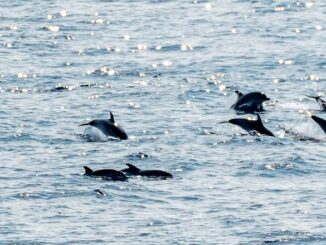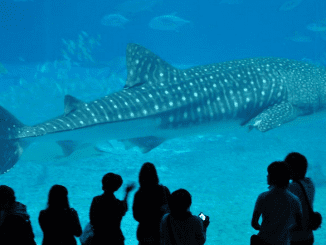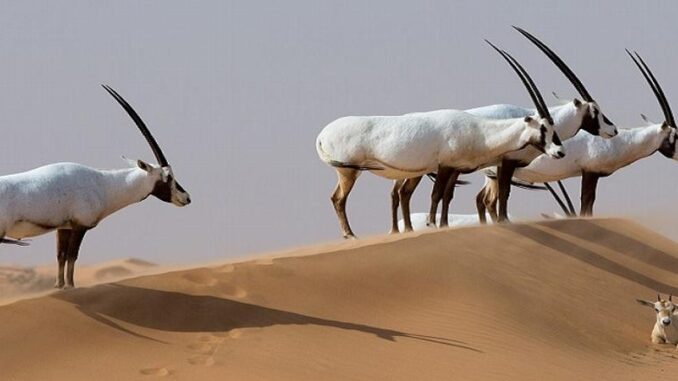
ABU DHABI, United Arab Emirates, October 9, 2025 (ENS) – The world’s foremost international event centered on conserving nature opened today in Abu Dhabi. Held every four years, the IUCN World Conservation Congress is convened by the International Union for the Conservation of Nature, a nonprofit based near Geneva, Switzerland that tracks species survival on the IUCN Red List.
This year, the IUCN World Conservation Congress brings together more than 10,000 attendees from October 9 to 15 – both on-site, at the Abu Dhabi National Exhibition Centre, and virtually.
The opening ceremony was hosted by Sheikh Khaled bin Mohamed bin Zayed Al Nahyan, Crown Prince of Abu Dhabi, who chairs the Abu Dhabi Executive Council.
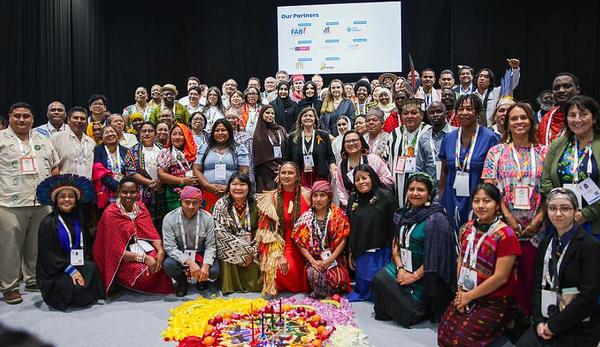
The 2025 Congress meets under the theme, “Powering transformative conservation,” aimed at shaping dialogue, decisions, and initiatives that deliver transformative outcomes for nature and people.
Decision makers from government, civil society, Indigenous Peoples’ organizations, academia, youth, and business will set the conservation and sustainable development agenda going forward.
The Congress will address five interlinked themes, as defined by the IUCN:
- – scaling up resilient conservation action: This theme aims to protect more land and sea areas while making ecosystems more resilient to climate change and human pressures.
- – reducing climate overshoot risks: Scientists warn that we could briefly exceed safe global warming limits. This “overshoot” could trigger extreme weather, droughts, and sea-level rise. The Congress will explore strategies to prevent this outcome and prepare for its possible effects.
- – delivering on equity: Environmental action must be fair. This means recognizing the rights and knowledge of Indigenous peoples and ensuring that conservation policies do not harm vulnerable communities. Delegates will discuss how to make sustainability more inclusive.
- –transitioning to nature-positive economies and societies: This theme focuses on transforming industries – like agriculture, construction, and finance – to support nature rather than deplete it. A nature-positive economy restores and protects ecosystems while supporting human development.
- – disruptive innovation and leadership for conservation: The Congress will highlight cutting-edge technology and bold leadership. Topics may include artificial intelligence for wildlife tracking, carbon-negative materials, and community-led restoration projects. The goal is to accelerate solutions that are effective and scalable.
The Congress enables IUCN’s more than 1,400 member organizations to democratically determine the most pressing issues in nature conservation and actions to address them to help guide humanity’s relationship with the planet.
Day One: Renewable Energy Agreement Signed
The IUCN and the International Renewable Energy Agency, IRENA, today signed a Memorandum of Understanding at the IUCN World Conservation Congress that takes what the Parties call “a major step towards strengthening collaboration” between the two organizations “in accelerating a renewable energy transition that is both sustainable and nature-positive.”
Signed by IUCN Deputy Director General Stewart Maginnis and IRENA Deputy Director-General Gauri Singh, the MoU outlines joint work to ensure that “the roll out of renewable energy not only reduces greenhouse gas emissions but also safeguards biodiversity, strengthens community resilience, and contributes to global sustainable development goals.”
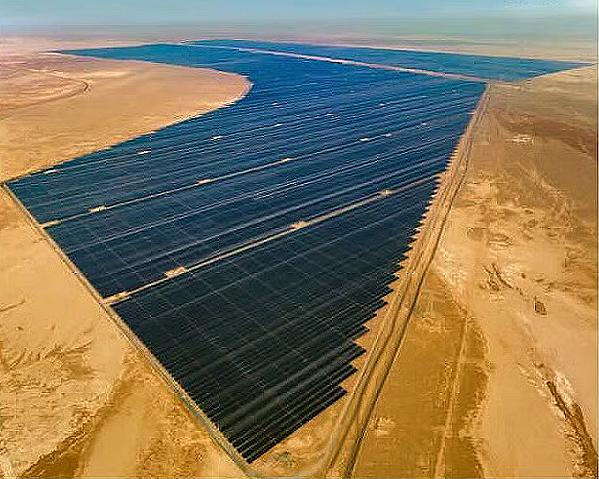
“This collaboration sends a strong message: the renewable energy transition must go hand in hand with protecting biodiversity and supporting communities,” said Maginnis. “Together with IRENA, we will work to ensure that solutions for the climate crisis also build a healthier planet.”
“Achieving the 11.2 terawatts of renewables capacity by 2030 in line with the UAE Consensus must take into account the preservation of ecosystems and enhancement of biodiversity,” said Singh. “With this partnership, we can ensure targeted measures that work in harmony with nature are put in place, so our pursuit of a renewables-based future truly benefits the planet and its people.”
Under the agreement, IUCN and IRENA will collaborate to:
- – Support the rapid transition from fossil fuels to renewable energy, reducing greenhouse gas emissions and addressing environmental challenges;
- – Develop projects to ensure that the roll out of renewable energy development mitigates negative impacts on biodiversity and local communities;
- – Develop tools to assess impacts on biodiversity and contributions towards positive nature goals from renewable energy projects;
- – Promote co-benefits between renewable energy deployment and conservation through joint policy analysis, guidelines and best practices;
- – Explore further cooperation, including capacity building, technical research, and knowledge dissemination.
Conservation Leaders Open World Congress
Today, the IUCN staged an opening ceremony that featured:
President of the Republic of Palau Surangel Whipps Jr.;
Her Royal Highness, Princess Lalla Hasna of Morocco;
Panama’s Minister of Environment Juan Carlos Navarro;
IUCN Patron of Nature and Founder of Mission Blue Dr. Sylvia Earle of the United States;
UN Assistant Secretary-General and Deputy Executive Director of UNEP Elizabeth Maruma Mrema;
IUCN President Razan Khalifa Al Mubarak, and;
IUCN Director General Dr. Grethel Aguilar.
Their remarks, and the comments of other officials, underscored the urgency of collective action to protect ecosystems and advance the Global Biodiversity Framework, the IUCN said.
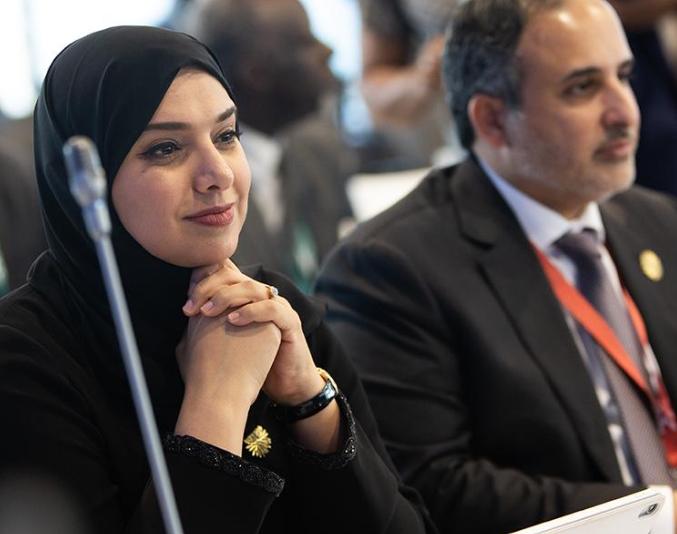
“Every day, the UAE affirms its pioneering role as a global driver of innovative solutions and comprehensive sustainability for all peoples. This approach is embodied in hosting the IUCN World Conservation Congress, a milestone event in global efforts to place nature at the heart of our development systems and achieve greater prosperity,” UAE Minister of Climate Change and Environment Dr. Amna bint Abdullah Al Dahak told the Congress.
“Supported by wise leadership, the UAE has a distinguished record in nature protection, reflecting a deep-rooted legacy of the Emirati people’s relationship with their environment, which continues today through the National Biodiversity Strategy 2031. This strategy aims to promote nature-based solutions, restore ecosystems, protect endangered species, and expand nature reserves, which now cover more than 15 percent of the country,” Dr. Al Dahak said.
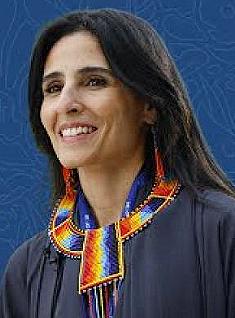
“This Congress is a reminder that the well-being of people and the well-being of nature are inseparable,” IUCN President Razan Khalifa Al Mubarak said. “We understand more than ever how deeply our lives depend on the natural world, yet we continue to act as if we are apart from it,” she said.
“Here in Abu Dhabi, we have the chance to turn understanding into unity, and unity into action,” she said. The decisions taken this week will determine whether we meet the moment with courage and cooperation. If we succeed, this Congress will show that science, inclusion, and shared purpose can still guide humanity toward a future where both people and nature thrive,” Dr. Al Shamsi said.
Secretary-General of the Environment Agency – Abu Dhabi, Dr. Shaikha Salem Al Dhaheri, highlighted the UAE’s advances in conservation.
“The UAE’s journey shows how science, innovation, and international cooperation can transform challenges into shared victories – from restoring more than four million corals and planting 50 million mangroves, to reintroducing the Arabian Oryx and leading global efforts to bring the Scimitar-horned Oryx back from extinction in the wild. These are not just national milestones, but models of collaboration that the world can replicate,” Al Dhaheri said. As we open the Congress, our message is clear: conservation succeeds when ambition is matched by evidence-based action and global partnership.”
Day One Focus on Rewilding
New guidelines on rewilding practice have been launched at the IUCN World Conservation Congress. Evolving over many years, the guidelines offer a clear, evidence-based framework for rewilding initiatives anywhere in the world.
Developed by the Rewilding Thematic Group of the IUCN Commission on Ecosystem Management, CEM, more than 60 groups collaborated on the guidelines. Created for practitioners, policymakers and communities, they emphasize foundational principles for rewilding projects and for integrating rewilding into overall conservation strategies.

“These guidelines have been eight years in the making, involving input from hundreds of people including policymakers, practitioners, scientists and academics from across the conservation sector, representing the views and expert knowledge of rewilding organisations worldwide. They provide a definitive statement of the state of the art in this growing field,” Dr. Steve Carver, professor at the University of Leeds, co-chair of the CEM Rewilding Thematic Group, and co-author of the guidelines, said.
With a nod to the hard work of the many Commission experts and stakeholders involved, CEM Chair Angela Andrade emphasized that “this momentum towards a formal IUCN policy on rewilding will ensure that rewilding is firmly embedded in global conservation policy in a way that is inclusive, evidence-based, and forward-looking.”
The Arabian Oryx (Oryx leucoryx) an antelope native to the United Arab Emirates, was declared Extinct in the wild in 1972 due to overhunting, but captive breeding in zoos and private reserves saved the species. By the 1980s, reintroductions to the wild began.
Today, the United Arab Emirates are inhabited by the largest population of Oryx leucoryx in the world. In 2023, the Arabian oryx population reached 8,016 individuals across the UAE, with 5,679 in the Abu Dhabi Emirate, both in captivity and in the wild. Now, the Environment Agency – Abu Dhabi is funding further reintroductions.
IUCN World Congress Plan of Work
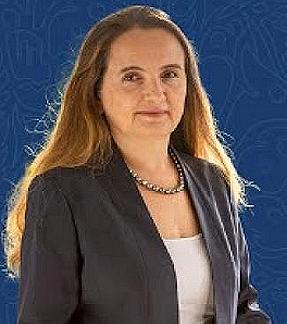
The 2025 IUCN Congress features the Members’ Assembly – the highest IUCN decision-making body. At the start and end of the Congress, IUCN Members will debate and vote on draft motions, which, if and when adopted, become Resolutions and Recommendations, forming the core body of IUCN’s policy and program, driving action on nature loss and other global challenges.
The Members Assembly is also expected to approve the IUCN Programme and Financial Plan for 2026–2029 and the new 20-year Strategic Vision. It will also elect the IUCN President, Council, Commission Chairs, and officers for the next term.
The full list of 40 motions, to be debated and voted upon in-person at Congress (and accessible to journalists), are here.
Five other summits will also enliven the opening days of the IUCN World Congress: the first World Summit of Indigenous Peoples and Nature, a Business Summit, a Youth Summit, a Philanthropy Summit and the third Middle East and North Africa, MENA, Oceans Summit.
Dr. Jane Goodall, DBE, had been scheduled to attend the IUCN Congress. Following her passing on October 1, IUCN said the organization will pay tribute to her conservation legacy and continue the vital work she inspired.
Featured image: The Arabian Oryx (Oryx leucoryx) an antelope native to the United Arab Emirates, was declared Extinct in the wild in 1972 due to overhunting, but captive breeding programs in zoos and private reserves saved enough animals to recover the species. Reintroductions into the wild began in the 1980s.
Today, the United Arab Emirates are inhabited by more than 8,000 Oryx leucoryx, the largest population in the world. The Environment Agency – Abu Dhabi is promising to fund more reintroductions. (Photo courtesy The Environment Agency – Abu Dhabi)


